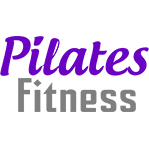30 Jan Is Yoga & Pilates the same thing?
Pipi Fun Facts: Did you know?
6 out of every 10 people think that Yoga and Pilates are the “same thing” :O
.
.
.
.
.
.
.
.
Pilates & Yoga may “look the same” to almost everyone who hasn’t done Pilates and/or Yoga before, but it certainly doesn’t come as a surprise – while they are in fact, NOT the same thing, they aren’t entirely different either. Let’s break both exercises down and take a closer look into how we can differentiate them a little better!
1) Shapes & Positions
How can one differentiate between a Pilates exercise and a Yoga pose? In Yoga, one generally holds each pose for a longer period of time, while Pilates exercises consists of continuous motions at a faster pace. Yoga exercises are static and involve the element of meditation – one stays in the position while enhancing the stretch of the body through breathing. On the other hand, Pilates involves a sequence of dynamic exercises which works the body through resistance, core awareness and breathing.
2) Props & Equipment
Both Pilates & Yoga exercises may incorporate the use of props to increase resistance, such as toning (weighted) balls or a resistance ring. Yoga exercises are performed on a mat, while Pilates has the option of Pilates Mat or Pilates Reformer. In comparison to Yoga, Pilates provides a wider variety of exercises by toning the body through natural resistance from one’s body weight, or through the use of equipment (straps & springs of a reformer machine).
3) Core Strength
In both Yoga & Pilates, the core is engaged during the exercises. The difference lies in the purpose of engaging the core – the core is engaged in Yoga exercises to allow one to move with fluidity and grace through the practice. Pilates is excellent for core strengthening as focus is placed on stability and strength of the core throughout the workout. Even during a leg or arm exercise, your core is always engaged and supporting everything you do. Every movement you make stems from core engagement.
4) Breathing
Both Yoga & Pilates uses breathing techniques in their exercises, which improves circulation and oxygenates the system. The difference lies in the type of breathing technique used:
In Yoga, a full belly breathing method is used – in each breath, one fully expands his/her belly on the inhale and deflate on the exhale. Belly breathing oxygenates the blood, lowers blood pressure and relaxes oneself. As Pilates has a strong focus on the core, belly breathing is not used as it discourages core engagement. Instead, Pilates uses a multidimensional breathing method where one inhales through the nose, filling up the lungs to their fullest capacity, hence expanding the ribs out and allowing engagement of the core. On the exhale breath, one exhales through pursed lips with a gentle contraction of the abdominal muscles to stay connected to the core.
The primary goal of Yoga is to stay connected to the breath – focus is placed on concentration on the breath first, before deepening a pose. In Pilates, priority is given to the precision of movement and starting position of an exercise, followed by the coordination of the movement with breathing.
5) Weight Loss Benefits
Both Yoga & Pilates are wonderful for strengthening the core and toning all the muscle groups in the body, but is it effective in achieving weight loss? Typically, a 50-min Power Yoga class will burn about 250 calories – while it is not significant enough to help you shed the kilos, a study found that people who practiced yoga regularly gained less weight during their midlife years than their nonpracticing peers. On the other hand, a 50-min Pilates workout can burn between 255 to 375 calories. For maximum weight loss results, you will need to do a 45-60min routine at least 4 days a week. Pilates Reformer exercises add the cardio and fitness element to Pilates poses, which burns additional calories and contributes to faster weight loss results when done correctly and regularly.
In summary, both Yoga & Pilates are beneficial to the body in terms of posture, flexibility and relaxation of the mind and body. However, Yoga is a practice, whereas Pilates is a workout. If you’re looking for faster and more effective results, give our Pilates Reformer class a shot today!





No Comments